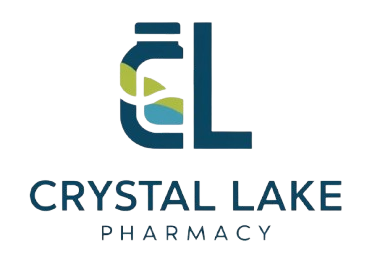Yes, there are five core components that make up a complete medication therapy management (MTM) plan. These parts work together to help you get the best results from your medicines while staying safe and healthy.
This guide will walk you through each component, explain why they matter, and show you how they can improve your health care experience.
Understanding Medication Therapy Management
Medication therapy management is like having a personal coach for your medicines. It’s a service that helps make sure your medications work well together and give you the best possible health outcomes.
According to the Centers for Medicare & Medicaid Services, MTM programs are designed to ensure optimum therapeutic outcomes for patients through improved medication use and reduced risk of adverse events. Think of it as a safety check for all your pills, liquids, and treatments. Your pharmacist looks at everything you take – from prescription drugs to vitamins – to spot problems before they happen.
The Five Key Components of an MTM Plan
The five core elements of medication therapy management are: medication therapy review, personal medication record, medication-related action plan, intervention and referral, and documentation and follow-up.
1. Medication Therapy Review (MTR)
The medication therapy review is the starting point of your MTM plan. The MTR can be comprehensive or targeted, depending on the needs of the patient. Studies published in the Journal of the American Pharmacists Association show that comprehensive medication reviews help identify and resolve medication-related problems while improving patient outcomes.
What Happens During a Review
Your pharmacist will sit down with you and go through every medication you take. This includes:
- Prescription medicines from all your doctors
- Over-the-counter drugs like pain relievers
- Vitamins and supplements
- Herbal products
- Eye drops and creams
Types of Reviews
Comprehensive Medication Review (CMR): A comprehensive medication review is an encounter conducted face-to-face or via telephone between a patient and their pharmacist. This thorough check happens at least once a year and covers everything.
Targeted Medication Review (TMR): This focuses on specific medicines or health problems. You might get this type when starting a new drug or if you have concerns about side effects.
Why Reviews Matter
During your review, your pharmacist checks if:
- Each medicine is right for your health condition
- You’re taking the correct dose
- Your medicines work well together
- You understand how to take everything properly
2. Personal Medication Record (PMR)
Your personal medication record is like a report card for your medicines. In Version 2.0, the PMR and MAP have been redesigned with the assistance of a health literacy expert to be more “patient friendly,” effective, and efficient for patients to use in medication self-management.
What’s Included
Your PMR contains:
- Names of all your medicines
- How much to take (the dose)
- When to take them
- What each medicine treats
- Special instructions
- Your allergies and reactions
How It Helps You
Having an up-to-date medication list helps you:
- Remember what to take when
- Share accurate information with doctors
- Avoid dangerous drug interactions
- Stay organized with your health care
Pro tip: Keep your PMR with you when you visit any doctor or go to the hospital. It could save your life in an emergency.
3. Medication-Related Action Plan (MAP)
Your medication action plan is your personal roadmap to better health. Think of it as a simple guide that tells you exactly what to do to get the most from your medicines.
What’s in Your Action Plan
Your MAP includes:
- Clear goals for your health
- Steps to take with each medicine
- What to do if you miss a dose
- Warning signs to watch for
- When to call your doctor or pharmacist
Real-Life Example
If you take blood pressure medicine, your action plan might say:
- “Take one pill every morning with breakfast”
- “Check your blood pressure twice a week”
- “Call if you feel dizzy or faint”
- “Goal: Keep blood pressure under 130/80”
Making It Work for You
The MAP provides an overview of what was discussed and guidance on how to achieve patient-centered goals, including non-pharmacological options or lifestyle changes. Your plan isn’t just about pills – it might include diet changes, exercise tips, or other healthy habits.
4. Intervention and Referral
Sometimes your pharmacist finds problems that need fixing right away. This is where interventions and referrals come in.
Types of Interventions
Your pharmacist might:
- Contact your doctor about dose changes
- Suggest a different medicine that works better
- Help you find ways to afford your medications
- Teach you how to use devices like inhalers
- Connect you with other health services
When Referrals Happen
Your pharmacist might refer you to:
- Your family doctor for follow-up care
- A specialist for complex conditions
- Nutrition counseling for diet-related health issues
- Support programs for specific diseases
Working as a Team
This framework for MTM service delivery in pharmacy practice is designed to facilitate collaboration among the pharmacist, patient, physician, and other health care professionals. Everyone on your health care team works together to help you feel better.
5. Documentation and Follow-Up
The last component makes sure your care continues over time. Core elements of documentation are a standardized format (SOAP or SBAR), education, interventions/collaboration, PMR, MAP, follow-up, and time spent.
Why Documentation Matters
Your pharmacist keeps detailed records of:
- What problems were found
- What changes were made
- How you responded to treatments
- Plans for future care
Follow-Up Care
Follow-up is a key component of a medication review. Your pharmacist will check in with you to see how you’re doing. This might happen:
- A few days after starting new medicine
- Once a month for ongoing problems
- Every few months for routine care
- Anytime you have questions or concerns
Staying Connected
Following an MTM, documentation should be communicated to physicians, payors, and patients/caregivers. Your pharmacist shares important information with your other doctors to keep everyone informed.
How These Components Work Together
All five parts of your MTM plan connect like pieces of a puzzle. Here’s how they flow together:
- Review finds what needs attention
- Record keeps track of your medicines
- Action plan guides your daily care
- Interventions fix problems quickly
- Follow-up makes sure everything stays on track
Benefits of a Complete MTM Plan
When all five components work together, you get:
Better Health Outcomes
- Fewer side effects and drug reactions
- Better control of chronic conditions like diabetes
- Reduced hospital visits and emergency room trips
Research from the National Center for Biotechnology Information shows that MTM services can significantly improve medication adherence, resolve drug therapy problems, and enhance patient engagement in medication management.
Improved Safety
- Prevention of dangerous drug interactions
- Proper medication storage and handling
- Quick identification of allergic reactions
Cost Savings
- Elimination of unnecessary medicines
- Finding more affordable alternatives
- Avoiding expensive medical complications
Peace of Mind
- Clear understanding of your treatment
- Confidence in taking your medicines
- Strong support from your health care team
Who Benefits Most from MTM Services
MTM plans help many people, but they’re especially valuable if you:
- Take multiple prescription medicines
- Have chronic conditions like diabetes or high blood pressure
- Recently left the hospital
- Have had medication problems before
- Take medicines that need careful monitoring
Getting Started with MTM
Who Provides MTM Services
Pharmacists pride themselves on being the ‘medication experts’ and are excellent sources of information for both prescription and over-the-counter medications. According to the American Pharmacists Association, over 90% of Americans live within 5 miles of a community pharmacy, making pharmacists easily accessible healthcare providers. Your local pharmacist is often the best person to provide MTM services.
What to Expect
Your first MTM visit might take 30 to 60 minutes. Bring:
- All your medicines (prescription and over-the-counter)
- A list of your health conditions
- Insurance information
- Questions about your medications
Cost and Coverage
Many insurance plans, including Medicare Part D, cover MTM services. Medication reviews are a free service offered by your pharmacy. The Centers for Disease Control and Prevention reports that pharmacist-provided MTM services have shown significant benefits in improving medication adherence and clinical outcomes while reducing healthcare costs. Check with your insurance or pharmacy about coverage.
Common Questions About MTM Components
How Often Do I Need Each Component?
- Reviews: At least once a year, more if your medicines change
- Record updates: Every time you start or stop a medicine
- Action plan changes: When your health goals change
- Interventions: As needed when problems arise
- Follow-ups: Depends on your individual needs
Can I Do MTM Online or by Phone?
The beneficiary’s CMR must include an interactive, person-to-person, or telehealth consultation performed by a pharmacist or other qualified provider. Yes, many MTM services can be done through video calls or phone appointments, making it easier to fit into your schedule.
What If I Don’t Speak English Well?
Many pharmacies offer MTM services in different languages or can provide interpreters to make sure you understand everything clearly.
Making MTM Work in Your Daily Life
Tips for Success
- Be honest about how you actually take your medicines
- Ask questions when something doesn’t make sense
- Keep your medication list updated and carry it with you
- Follow through with your action plan steps
- Stay in touch with your pharmacist between visits
Building a Partnership
Think of your pharmacist as a partner in your health journey. The more they know about your lifestyle, concerns, and goals, the better they can help you succeed.
When to Reach Out
Contact your pharmacist right away if you:
- Have new side effects
- Can’t afford your medicines
- Don’t understand how to take something
- Want to stop taking a medicine
- Have questions about over-the-counter drugs
The Future of MTM
Medication therapy management continues to grow and improve. New technology makes it easier to track your progress and stay connected with your health care team.
Some pharmacies now offer:
- Text reminders for taking medicines
- Apps to track your symptoms
- Video visits for follow-up care
- Home delivery of medications
Final Thoughts
The five components of a medication therapy management plan work together to keep you healthy and safe. From the initial medication therapy review to ongoing documentation and follow-up, each part plays an important role in your care.
Remember that MTM is not a one-time event – it’s an ongoing partnership with your pharmacist and health care team. By understanding these five components, you’re better prepared to take an active role in managing your medications and improving your health.
If you’re ready to start your MTM journey, contact Crystal Lake Pharmacy today. Our experienced pharmacists are here to help you get the most from your medications while staying safe and healthy.
Taking charge of your medication management is one of the best investments you can make in your health. With the right support and these five key components working together, you’ll have the tools you need for better health outcomes and peace of mind.

